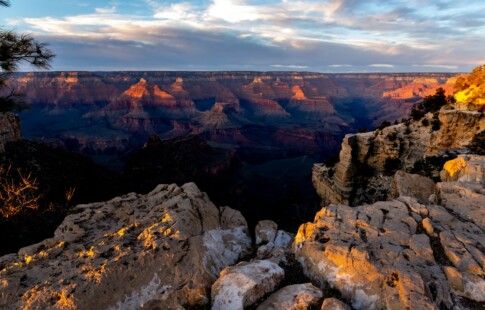
What’s Being Done to Save Government Red List Species?
We are reader-supported. When you buy through links on our site, we may earn affiliate commission.
Protecting the planet’s wildlife is up to us.
The variety and amount of animals that occurs on this planet haven’t been fully documented. Science discovers thousands of new species each year, including plants, animals and insects. However, with the discovery of new species, other species are lost to habitat destruction, hunting, poaching and climate change.
Humans are fully aware of their destructive nature. We’ve tried to implement procedures and policies to slow the destruction of the natural environment. The Endangered Species Act (ESA) was enacted in 1973 to decrease the loss of plant and animal species from extinction.
Since the ESA has been in place, several species have been brought back from the brink of extinction. This includes the bald eagle, whooping crane, American alligator, grizzly bears, the California condor, and the American gray wolf, among others. However, there is still work that needs to be done and several species on the government red list that need to be saved.
Technology, science and environmentally conscious groups and individuals are all playing a role in protecting endangered species. Below are some ways in which government red list species are being cared for.
Monitoring and Tracking
One way to keep tabs on endangered species is to know where they are in the world and how their environment is being impacted. Technology makes it easier and more efficient to track populations of animals across the globe. If there are changes to the environment, the impacts on the animal population can be documented and remedied. Then further harm doesn’t come to the protected species.
Keeping tabs on a population also allows researchers to document the health of the population. If the goal is to increase the numbers of endangered species, they need to have optimum conditions and be able to breed. If the environment isn’t conducive to supporting the population, it’s possible new policies and plans will need to be put in place so population growth can be successful.
Monitoring and tracking species of concern also helps reduce the amount of poaching for particular species, including elephants and rhinos. While the process won’t stop poaching completely, it will make it more difficult and risky for those who attempt to kill animals without a license.
Government Policies and Strategies
In the U.S., any company that wants to expand, build, mine, develop roads, put up wind turbines, etc. has to conduct studies for federal threatened, endangered, protected and candidate species, and they may also have to conduct surveys for state-threatened species.
If the goal of the ESA is to ensure that we don’t lose animals to extinction, protecting them with policies and strategies is a good idea. Measures will be taken to ensure the species are protected on construction and build sites. These measures vary on a case-by-case basis. They depend on what species will be affected and when they will be affected (during breeding season, migration, etc.). Mitigating or preventing impacts to protected species isn’t always popular with companies and individuals who view it as a hindrance to progress. However, without these policies and strategies in place, the world would lose even more species at an alarming rate.
Captive Breeding Programs
With the loss of natural habitats, it’s not always possible to bring animals back from the edge of extinction in a natural, wild way. However, to prevent the species from being completely lost, captive breeding programs have been created. These programs have saved a variety of species from extinction. Captive breeding has helped the corroboree frog, bongo, regent honeyeater, golden lion tamarin and the Amur leopard, among others.
The problem with captive breeding programs is whether or not the populations will be able to return to the wild and thrive in their natural habitats. Studies have been conducted to determine if breeding programs promote genetic diversity and will allow the populations to be self-sustaining outside a captive environment. Science doesn’t have all the answers yet, but it hopes to make progress in the future.
Partnerships with Conservation Groups and Individuals
Helping endangered and protected species is a task that takes the involvement of multiple groups, government entities, organizations and individuals. It’s not a task that one entity can accomplish on their own. By working together and developing plans, mitigation and restoration of endangered species are possible.
Informing and educating the public is another way to help reverse the negative impacts on government red list species. Knowledge is powerful, and it can motivate and encourage people to take action and work toward a common goal.
Planet Earth is full of amazingly diverse creatures — some of which we haven’t discovered yet. Understanding animals and the environment gives us better insight into ourselves. However, if we destroy animal populations and habitats, we’ll learn the lessons they have to teach. It is in ours and the world’s best interest to protect government red list species. This will take cooperation to accomplish that task.
Share on
Like what you read? Join other Environment.co readers!
Get the latest updates on our planet by subscribing to the Environment.co newsletter!
About the author
Jane Marsh
Starting from an early age, Jane Marsh loved all animals and became a budding environmentalist. Now, Jane works as the Editor-in-Chief of Environment.co where she covers topics related to climate policy, renewable energy, the food industry, and more.





